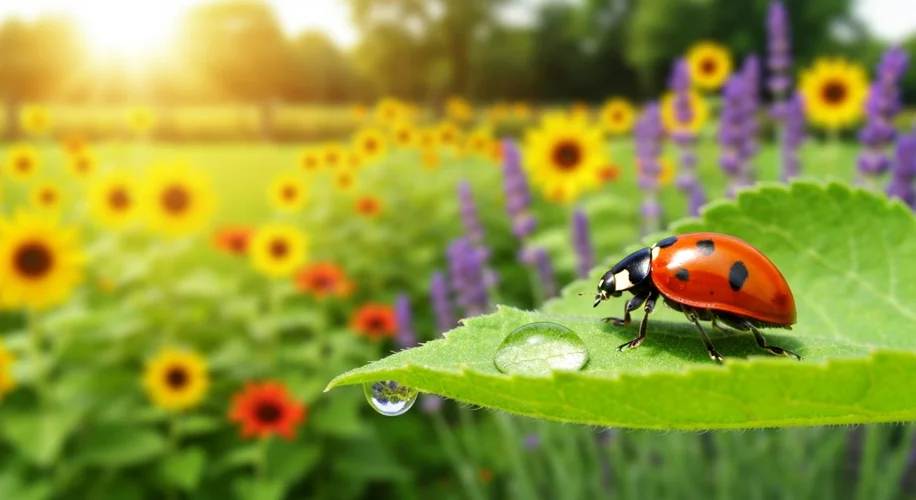Hey everyone, Elias here!
Have you ever seen a caterpillar munching away on your prize tomato leaves and wished for a natural way to handle it? I certainly have. It got me thinking about the tiny helpers in our gardens – the beneficial insects. They’re often overlooked, but they play a huge role in keeping our plants healthy and productive.
It’s all about creating a balanced ecosystem right in our backyards. Think of it like a miniature natural world. When we introduce the right elements, we invite in insects that actually help us, rather than just cause problems.
What are Beneficial Insects?
Simply put, these are the good guys. They fall into two main categories:
- Predators: These insects hunt down and eat garden pests. Think ladybugs eating aphids, lacewings devouring whiteflies, and praying mantises snagging caterpillars.
- Parasitoids: These insects lay their eggs on or inside other insects (often pests). When the eggs hatch, the larvae consume the host insect. A common example is tiny parasitic wasps that target aphids.
And of course, we can’t forget the pollinators! Bees, butterflies, hoverflies – they’re essential for getting fruits and vegetables to grow.
Why Welcome Them?
Beyond natural pest control, a garden with a good mix of beneficial insects is a more vibrant and resilient garden. They contribute to biodiversity and can reduce or even eliminate the need for chemical sprays, which is a big win for sustainability and for anyone who loves healthy, homegrown food.
How to Attract Them
Creating a haven for these helpers is easier than you might think. It’s about providing what they need: food, water, and shelter.
- Plant a Diversity of Flowers: Many beneficial insects feed on nectar and pollen. Planting a variety of flowering plants, especially those with small, open blooms, provides a constant food source. Think dill, fennel, yarrow, cilantro, Queen Anne’s lace, and cosmos. Native plants are often a fantastic choice as they are adapted to your local environment and support local insect populations.
-
Offer Water Sources: A shallow dish filled with pebbles or marbles and water can be a lifesaver for thirsty insects. The pebbles give them a safe place to land without drowning.
-
Provide Shelter: Don’t be too tidy! Leaving some leaf litter, hollow stems, or even a small brush pile can offer shelter and overwintering sites for beneficial insects.
-
Avoid Broad-Spectrum Pesticides: This is crucial. Even organic pesticides can harm beneficial insects. If you must treat a pest problem, try to use targeted methods and apply them carefully, preferably in the evening when pollinators are less active.
-
Embrace a Little ‘Wildness’: Letting a corner of your garden go a bit wild with native plants can create a perfect habitat. It might not look as manicured, but the ecological benefits are huge.
It’s amazing how a few simple changes can encourage these tiny allies to move in and start working their magic. My garden has become so much more dynamic since I started focusing on creating this welcoming environment. I’ve seen fewer aphid outbreaks, more pollination on my squash plants, and a general sense of a thriving, interconnected garden.
So, next time you see a ladybug or a hoverfly, give them a nod. They’re working hard for you!

